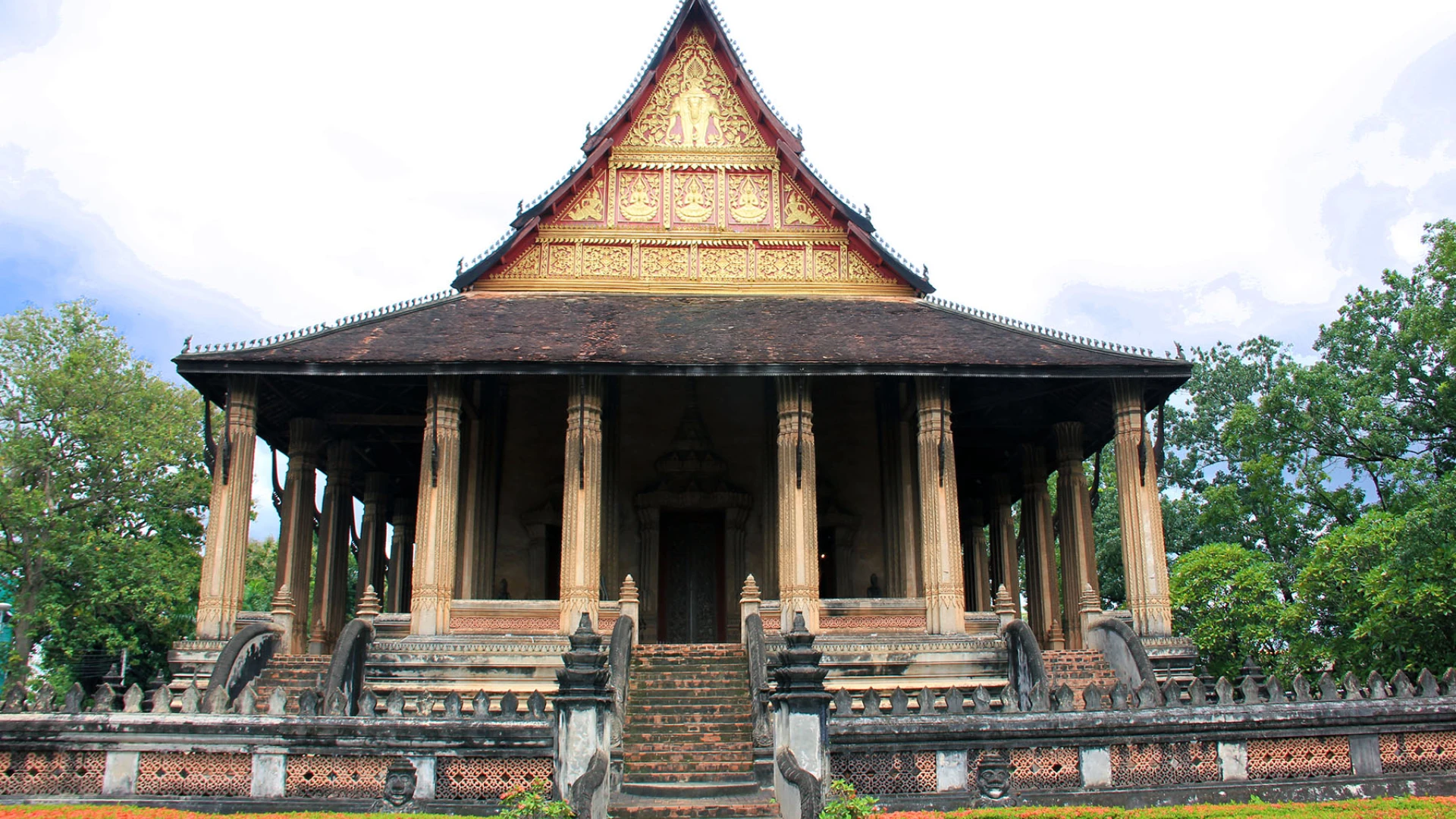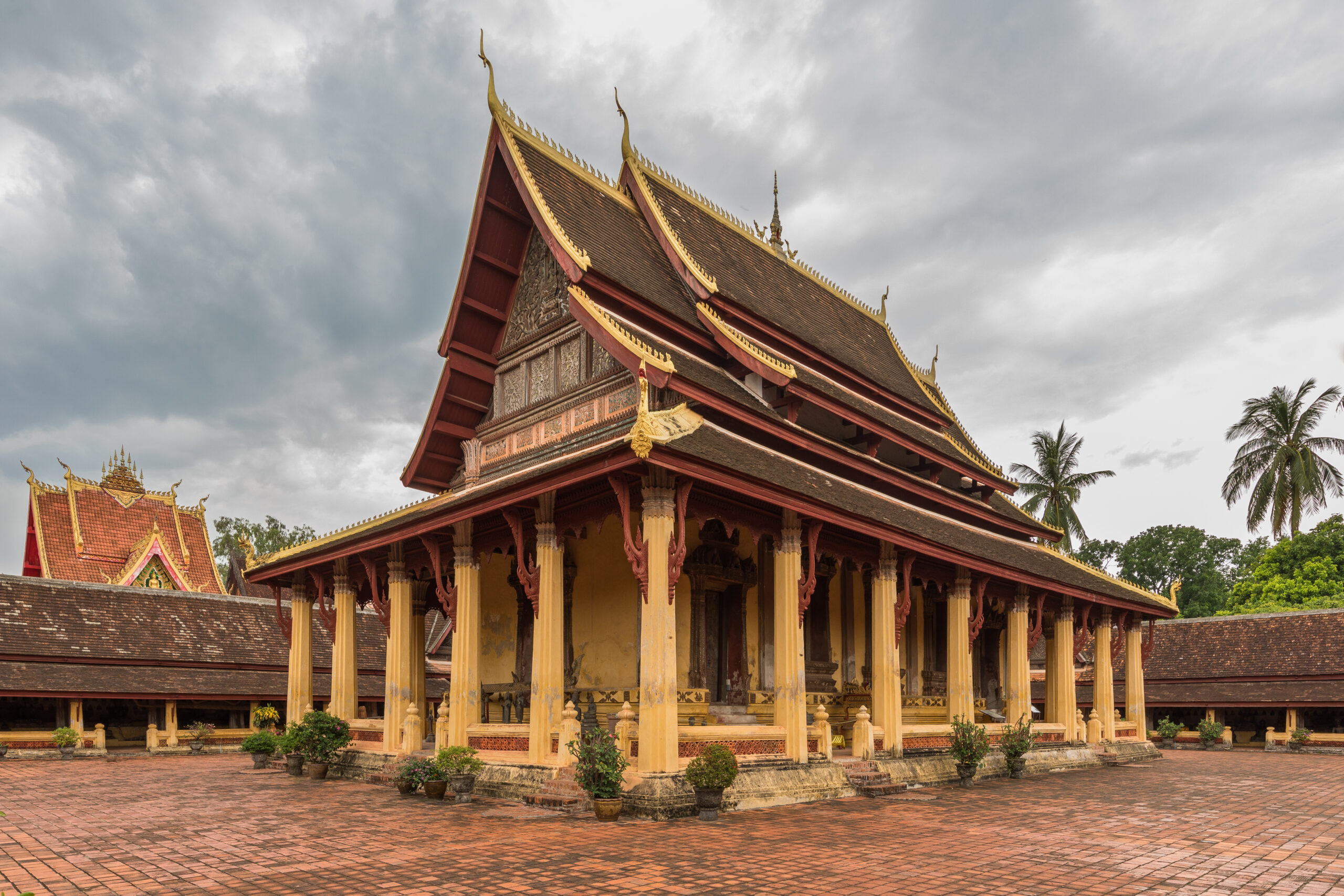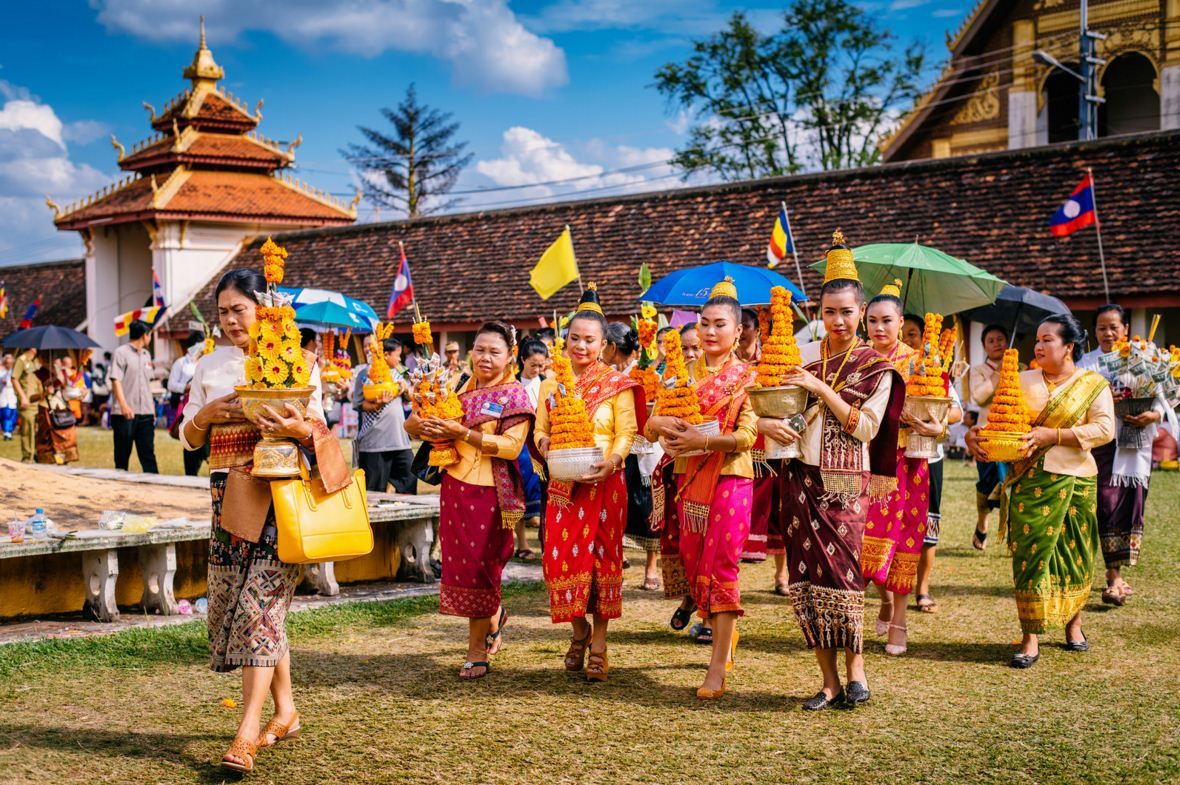1. Overview
Hor Phra Keo, also known as Haw Phra Kaew, is a historical Buddhist temple-turned-museum located in the heart of Vientiane. Built in 1565 by King Setthathirath, it was originally constructed to house the Emerald Buddha, one of Southeast Asia’s most revered religious artifacts. Today, it serves as a museum displaying a rich collection of Lao religious art and historical artifacts.
Name: Hor Phra Keo (Haw Phra Kaew)
Location: Setthathirath Road, Vientiane, Laos
Coordinates: 17.9750° N, 102.6330° E
Best visited: While exploring Vientiane’s cultural and religious landmarks or seeking to appreciate traditional Lao architecture and art.
2. History of the Place
Hor Phra Keo holds immense cultural and religious significance in Laos:
- Establishment: Built in 1565 by King Setthathirath to house the Emerald Buddha.
- Emerald Buddha Relocation: The Buddha was moved to Bangkok in 1779 during the Siamese invasion.
- Renaming: After the Buddha’s relocation, it became known as Hor Phra Keo, meaning “Altar of the Emerald Buddha.”
- Destruction: The temple was destroyed in 1828 during the Siamese invasion.
- Reconstruction: It was rebuilt between 1936 and 1942 under French colonial rule, with some modifications.
- Architectural Design: The temple is known for its intricate Lao architecture and decorative elements, influenced by both Lao and Thai styles.
- Museum Conversion: The temple became a museum in the 1970s, housing a collection of Lao religious art and artifacts.
- Buddhist Art: Displays numerous Buddha statues, carvings, and items from Lao history.
- Gardens and Sculptures: The grounds feature a peaceful garden with sculptures, including a stone jar from the Plain of Jars.
- Cultural Role: The site continues to serve as a symbol of Laos’ spiritual heritage.
3. Location
4. What Makes “Hor Phra Keo” Popular?
Hor Phra Keo is popular for its historical, cultural, and spiritual significance:
- Cultural Heritage: A vital historical site for understanding Lao Buddhism and art.
- Architectural Beauty: The temple’s traditional design is a beautiful example of Lao religious architecture.
- Historical Significance: Once home to the Emerald Buddha, a symbol of national pride.
5. Overall Ratings (1 to 5 Stars)
Hor Phra Keo is highly rated for its historical and architectural value:
Overall Rating: ⭐⭐⭐⭐⭐ (5/5)
Cultural Significance: ⭐⭐⭐⭐⭐ (5/5)
Authenticity: ⭐⭐⭐⭐⭐ (5/5)
Atmosphere & Environment: ⭐⭐⭐⭐⭐ (5/5)
Accessibility: ⭐⭐⭐⭐⭐ (5/5)
Tourist Friendliness: ⭐⭐⭐⭐⭐ (5/5)
6. Weather
Vientiane experiences a tropical climate with distinct wet and dry seasons:
Best Time to Visit: November to February (cooler, dry season)
Temperature Range: 25–35°C (77–95°F)
Wet Season: May to October
Rain Gear: Recommended during the wet season.
7. Nearest Five Hotels
For visitors seeking accommodation near Hor Phra Keo, here are five great options:
- Sabaidee@Lao Hotel: Comfortable and centrally located with easy access to major attractions.
- Vientiane Plaza Hotel: Offers modern amenities and is a short walk from the temple.
- Green Park Boutique Hotel: A blend of traditional and contemporary styles, perfect for a peaceful stay.
- City Inn Vientiane: A budget-friendly option with easy access to the temple.
- Ibis Vientiane Nam Phu: Centrally located, offering essential amenities for travelers.
8. Timings
Hor Phra Keo operates during standard hours:
Opening Hours: 8:00 AM – 4:00 PM daily
Best Time to Visit: Early morning or late afternoon to avoid crowds and enjoy a more relaxed atmosphere.
9. Time Required to Visit
A visit to Hor Phra Keo typically requires a moderate amount of time:
Visit Duration: 1–2 hours
Ideal for: History enthusiasts, art lovers, and those interested in Lao culture and architecture.
10. Entry Fees & Ticket Booking Details
There is an entry fee to visit Hor Phra Keo:
Entry Fee: 30,000 LAK (approximately $3)
Booking: Not required for general visits.
11. Things to See & Do
Visitors can explore a variety of exhibits and architectural features:
- Explore: The museum’s displays of religious artifacts, including Buddha statues and carvings.
- Learn: About the history of the Emerald Buddha and its impact on Laos.
- Photography: Capture the stunning architecture, sculptures, and peaceful gardens surrounding the temple.
12. Best Time to Visit
The best time to visit is during the dry season when the weather is cooler and more comfortable:
Best Time: November to February (cooler, dry season)
Time of Day: Early morning or late afternoon for a more peaceful experience.
13. Nearest Parking Spots
Street parking is available near Hor Phra Keo, as well as public parking spaces:
Street Parking: Available near the temple.
Public Parking: Public parking lots are located around popular landmarks.
Alternative: Tuk-tuks and bicycles are also convenient for getting around the area.
14. Tips for Visitors
- Dress Modestly: As a religious site, it is important to dress respectfully.
- Respect the Space: Be mindful of local customs and the spiritual significance of the temple.
- Take Your Time: Spend time appreciating the art, architecture, and historical significance of the site.
- Photography: Be considerate when taking photos, especially during religious activities.
15. How to Reach the Place
Hor Phra Keo is centrally located in Vientiane, easily accessible by foot, tuk-tuk, or bicycle:
By Tuk-Tuk: Convenient and affordable for short trips.
By Bicycle: A great way to explore Vientiane at your own pace.
By Foot: Easy access from nearby attractions like the Presidential Palace and Patuxai.
Taxi: Available for longer trips.
16. Nearby Attractions to Combine for the Visit
While visiting Hor Phra Keo, consider exploring these nearby landmarks:
- Pha That Luang Stupa: The most significant Buddhist monument in Laos.
- Patuxai (Victory Monument): A triumphal arch with panoramic views of the city.
- Wat Si Saket: The oldest surviving temple in Vientiane.
- COPE Visitor Centre: Learn about the impact of unexploded ordnance in Laos.
- Mekong Riverfront: A scenic area for shopping, dining, and relaxing along the river.



